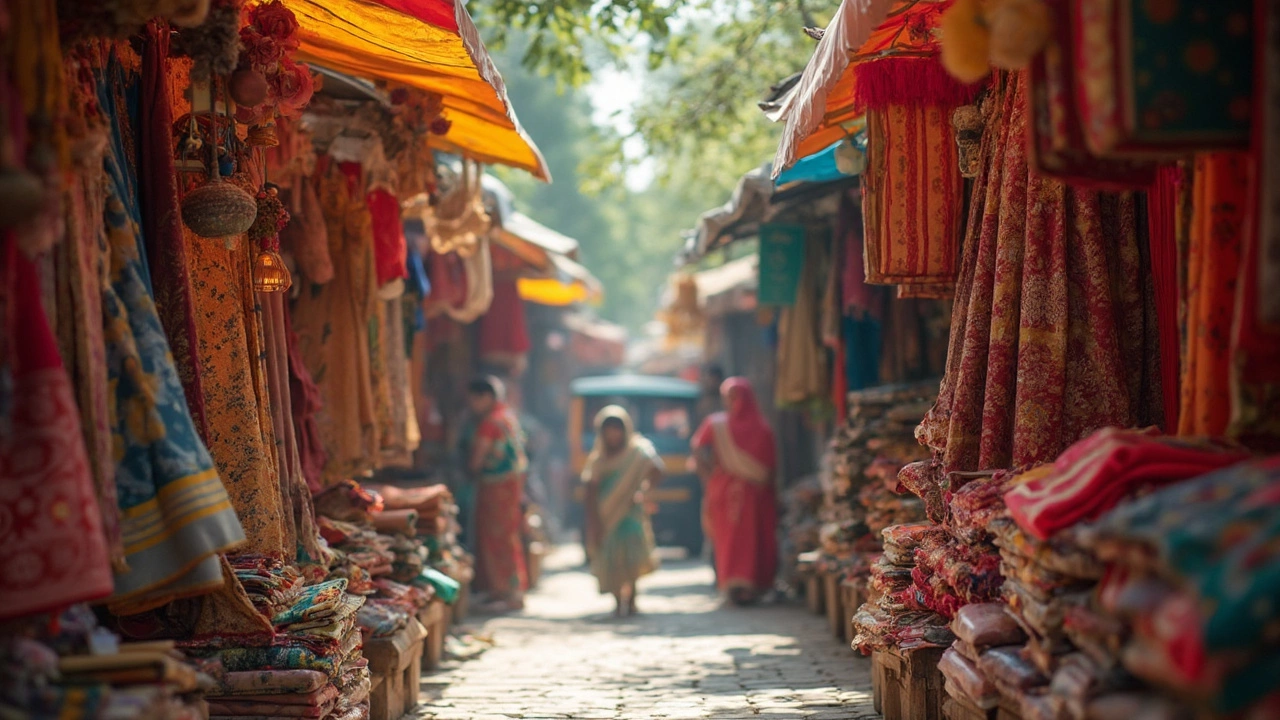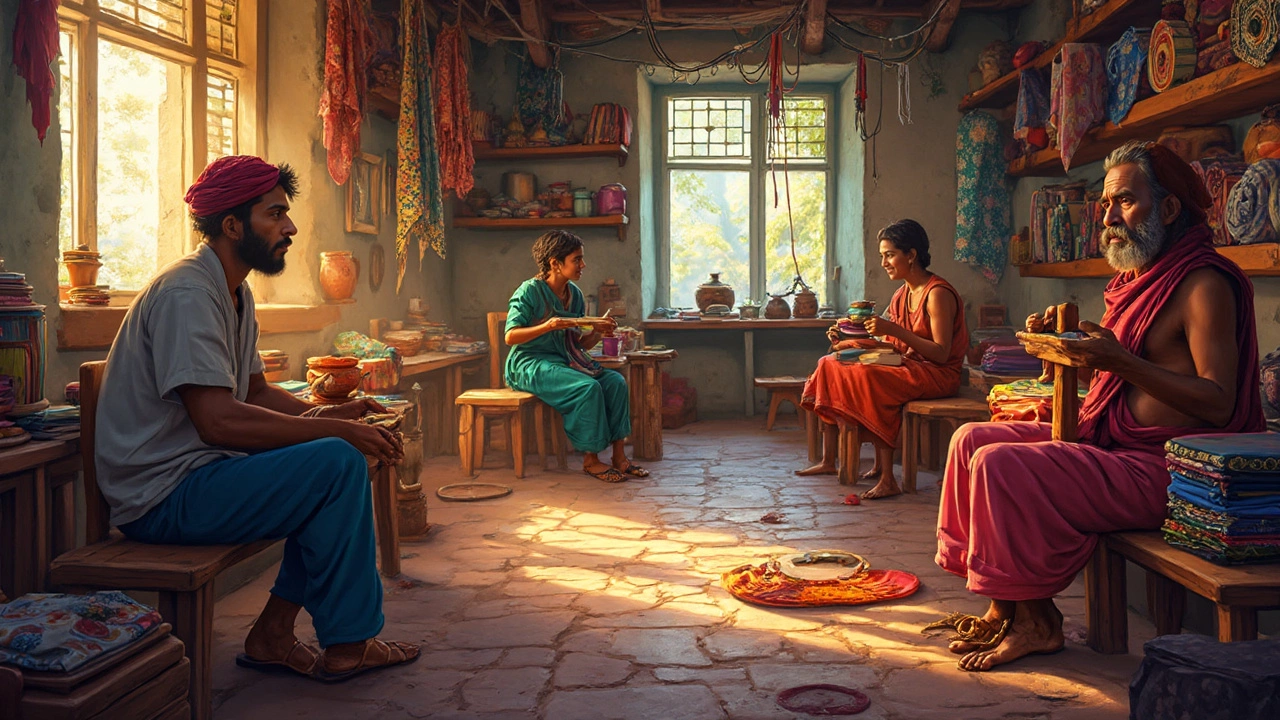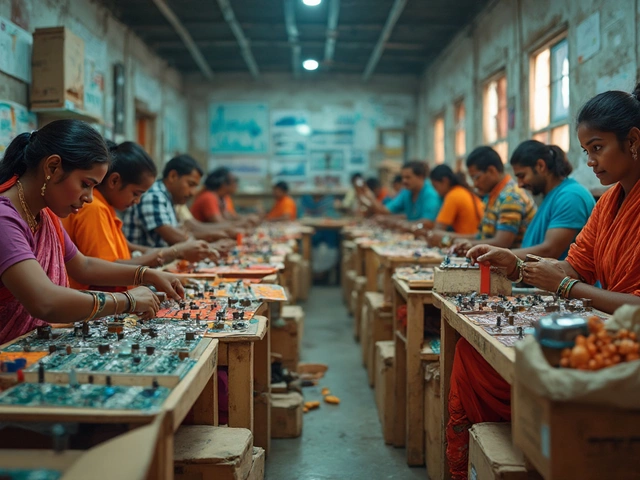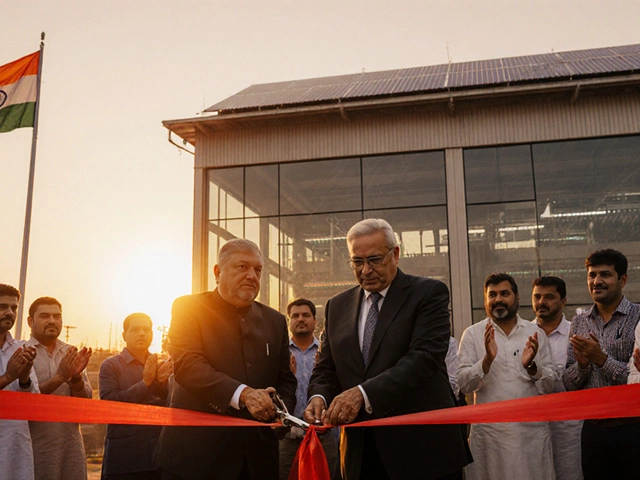Diving into the textile business in India can feel like stepping into a well-oiled machine that's been running for centuries. It's not just about weaving cloth, but a tradition steeped in history, culture, and innovation. So, why are so many keen on hopping onto this colorful bandwagon? Well, for starters, India boasts one of the largest textile industries worldwide. Imagine a market where vast swathes of fabric stretch across both domestic and international borders—now, that's a place of immense potential.
Of course, it’s not just plain sailing. While many are eager to tap into this booming sector, those who truly succeed understand its intricacies. For instance, India's competitive production costs are a major draw. Cheap labor and raw materials make it an attractive manufacturing hub. But there's more to the story.
In a world leaning heavily towards sustainability, Indian textiles are redefining the rules. Eco-friendly practices are in vogue, and those leveraging this are already a step ahead. This isn't merely about profits—it's about being part of a larger global narrative. And with government schemes further sweetening the pot, there's no surprise in the growing attention this sector is receiving.
- Understanding the Indian Textile Market
- Profit Drivers in the Indian Textile Sector
- Challenges Facing Textile Manufacturers
- Strategic Tips for Success
- The Future of the Textile Industry in India
Understanding the Indian Textile Market
The textile industry in India is a behemoth with deep historical roots and modern branches touching almost every corner of the globe. With a diverse range of products, from handwoven fabrics to high-tech textiles, this market is as varied as it is vast.
Rich History and Huge Scale
India's textile legacy dates back centuries, playing a pivotal role in the evolution of trade. Indian cotton was sought after by civilizations worldwide even before the Industrial Revolution. Fast forward to today, and the textile manufacturers in India remain key players on the international stage. The industry contributes about 2.3% to the country's GDP and employs over 45 million people. It's the second largest employment sector after agriculture.
Diverse Market Segments
The Indian textile market is categorized into two main segments: the organized sector and the unorganized sector. The organized sector, which deals with the large-scale production of garments and apparel, is driven by economies of scale and employs advanced technologies. On the other hand, the unorganized sector comprises handlooms and handicrafts, cherished for their artisanal value.
Favorable Government Policies
The Indian government has been proactive in supporting the textile sector. Initiatives like the Integrated Textile Parks (SITP) aim to boost infrastructure, while the Technology Upgradation Fund Scheme (TUFS) provides financial aid for modernizing facilities. These policies help in maintaining India's competitive edge in the global market.
Market Demand and Export Strength
With a growing middle class and rising disposable incomes, domestic demand for textiles is soaring. On the export front, India stands tall. The country is among the top exporters of textiles worldwide, with key markets in the USA, EU, and the Middle East.
Amidst these dynamics, what sets the textile business in India apart is its capacity to pivot and adapt to changing global needs, whether through sustainable practices or digital transformation.
| Factor | Contribution |
|---|---|
| Industry's GDP Contribution | 2.3% |
| Employment | Over 45 million people |
| Major Export Markets | USA, EU, Middle East |
Profit Drivers in the Indian Textile Sector
The Indian textile sector is like a gold mine for those who know how to dig out the gold. There are a few solid reasons why this industry rakes in cash, making it a lucrative venture for many. Let's break these down in a way that's easy to digest.
Massive Domestic Market
India’s vast population isn't just a number; it's a thriving market waiting to be tapped. Every year, millions enter the middle class, eager to buy homegrown fashion and textiles. This constant demand fuels local industries, keeping cash registers ringing. And hey, it's not just about traditional wear anymore—Western styles are weaving their way in too, helping manufacturers diversify even more.
Global Export Powerhouse
Beyond borders, India is a textile titan. Being one of the top exporters of textiles worldwide, it's got a firm footing in the global market. Countries like the US, UK, and others in the EU can't seem to get enough of Indian materials. This global reach not only broadens sales but also spruces up profit margins significantly.
Cost-Effectiveness
Let's talk numbers. India’s textile manufacturers enjoy reduced costs thanks to cheaper labor and abundant raw materials. This advantage translates into competitive pricing on the global stage. Fusion of quality with affordability? That’s a recipe both consumers and businesses love.
Government Incentives and Support
The government’s been quite the fairy godmother, offering various incentives to boost the textile sector. Schemes surrounding technology upgradation, textile parks, and special export zones help industries cut down operational overheads. These perks provide a cushion, making it easier to invest and take those daring steps forward.
Technological Advancements
The textile business India isn't stuck in a bygone era. Innovations in machinery and manufacturing have given firms the edge to produce faster, smarter, and with better precision. Take automation and digitalization, for instance—they're the secret sauce many companies are leveraging to stay ahead.
| Year | Export Value (Billion USD) | Employment (Million) |
|---|---|---|
| 2022 | 44 | 45 |
| 2023 | 46 | 47 |
This table shows the upward trajectory of export value and employment, illustrating just how vibrant the textile industry India is becoming. It's hard not to see why so many are betting on its potential.

Challenges Facing Textile Manufacturers
Starting out in the Indian textile business seems exciting with all its potential, but it's not without its hurdles. Manufacturers face several tough challenges that need to be tackled with smart strategies to ensure they stay profitable. Let's take a look at some of the key issues.
Competition and Pricing Wars
The textile industry India is vast and cutthroat, with everyone from large factories to small businesses vying for market share. This intense competition often results in pricing wars, pushing down profit margins. Many manufacturers find themselves struggling to maintain healthy pricing, especially when international markets demand competitive rates.
Regulatory Challenges
Navigating the complex web of regulations can be tricky. Textile manufacturers have to deal with various compliance and regulatory requirements, from environmental norms to labor laws. Sometimes, these regulations aren’t entirely clear or are costly to implement.
Raw Material Fluctuation
Dependence on fluctuating raw material prices can be daunting. Cotton, a major raw material, often sees price swings that can throw manufacturers off balance. Securing a steady supply of quality raw materials at a reasonable price becomes a task of strategic importance.
Infrastructure and Logistics Issues
A robust logistics network is crucial, yet many regions suffer from poor infrastructure, which raises transportation costs and delays. For a sector dependent on tight timelines and efficient supply chains, these bottlenecks can significantly affect the bottom line.
Labor Dynamics
Though India is known for its affordable labor, retaining skilled workforce remains a challenge. High turnover rates and a lack of training opportunities can disrupt operations and lower productivity. Investing in workforce development is essential but often comes at a cost that's difficult for smaller businesses to bear.
Despite these challenges, the textile manufacturers in India continue to evolve, adopting innovative techniques and technology to stay competitive. Understanding and addressing these hurdles are crucial steps towards harnessing the full potential of the textile sector.
Strategic Tips for Success
So, you've got your eyes set on the textile business India and are raring to make it a success. Great choice! But where do you start to ensure you're not just another fish in the vast textile ocean? Here are some strategic tips to help you carve your niche and reap profits.
1. Embrace Technology
First things first, get tech-savvy. The textile industry is no stranger to innovation. Investing in advanced manufacturing equipment can significantly reduce costs and increase efficiency. Plus, utilizing data analytics can help predict trends and stock demand. Staying ahead of the curve is crucial.
2. Focus on Sustainability
Next up, think green. Sustainability is more than a buzzword—it's becoming the standard. Customers, especially from the international market, are leaning towards eco-friendly products. Integrating sustainable practices can not only boost your brand image but also open doors to new markets.
3. Leverage Government Schemes
Here's a gem not to miss: the Indian government offers a plethora of schemes to boost the textile sector. From subsidies to training programs, there’s a lot on the table. Tapping into these resources can give you an edge.
4. Explore E-commerce
The digital landscape is expanding, and so should your reach. Setting up an online store can expand your clientele beyond geographical limits. With platforms like Amazon and Flipkart facilitating sales, you can channel your products to a wider audience.
5. Understand Your Market
Lastly, get to know your audience. Conduct market research to understand what's trending. Whether it’s fabric types or patterns, knowing what’s in demand is half the battle won.
Remember, it's not just about making cloth—it's about weaving success. Following these strategies, you'll be well on your way to not just surviving but thriving in the textile market.

The Future of the Textile Industry in India
As the world keeps spinning its way towards modernization, the textile industry in India is not just standing still. It's gearing up for some exciting transformations that go beyond mere threads and looms. India already brags about its massive textile production capabilities, but the future holds even more promise with a mix of tradition and technology.
Technological Innovations
One major shift is the adoption of cutting-edge technology. From automated sewing machines to AI-driven supply chain solutions, innovation is weaving new possibilities. Imagine the efficiency when smart tech meets skilled craftsmanship—it's like a match made in textile heaven. Firms gearing up for this tech revolution stand to gain big-time, not just in production but in quality and creativity too.
Sustainable Practices
Another keyword in the future of Indian textiles is sustainability. With the world urging for greener alternatives, the textile market is responding with eco-friendly fibers, dyes, and sustainable production processes. This not only keeps Mother Earth happy but also taps into a growing market segment that values planet-first products.
Government and Economic Push
The Indian government isn't just twiddling its thumbs either. With initiatives like 'Make in India' and financial incentives, the support system is robust. These schemes aim at improving infrastructure, reducing bottlenecks, and pushing for better trade policies. The emphasis on digitization through e-commerce platforms also opens fresh avenues for reaching global customers.
Challenges Ahead
But it's not all rosy. Competition from countries like Bangladesh and Vietnam, fluctuating raw material prices, and labor challenges can rain on this parade. To navigate these choppy waters, businesses need to stay adaptable and innovate consistently.
Considering these dynamics, the future looks bright yet challenging for India's textile industry. It's like setting sail on uncharted waters, armed with modern tools, traditional wisdom, and an eye on the sustainable horizon. So, what's in it for you? If you play your cards right, diving into this evolving sector could be as profitable as it is exciting.






